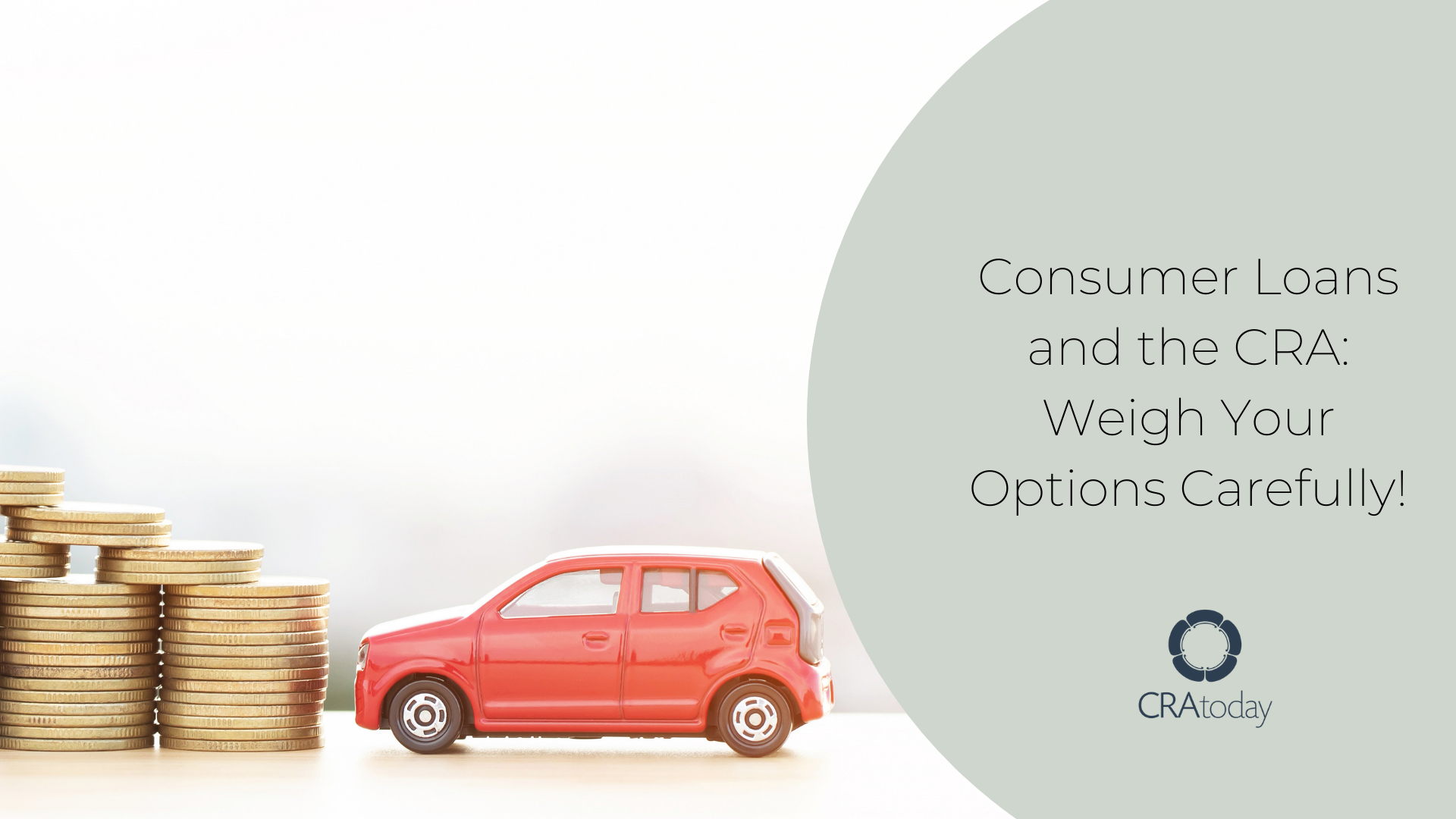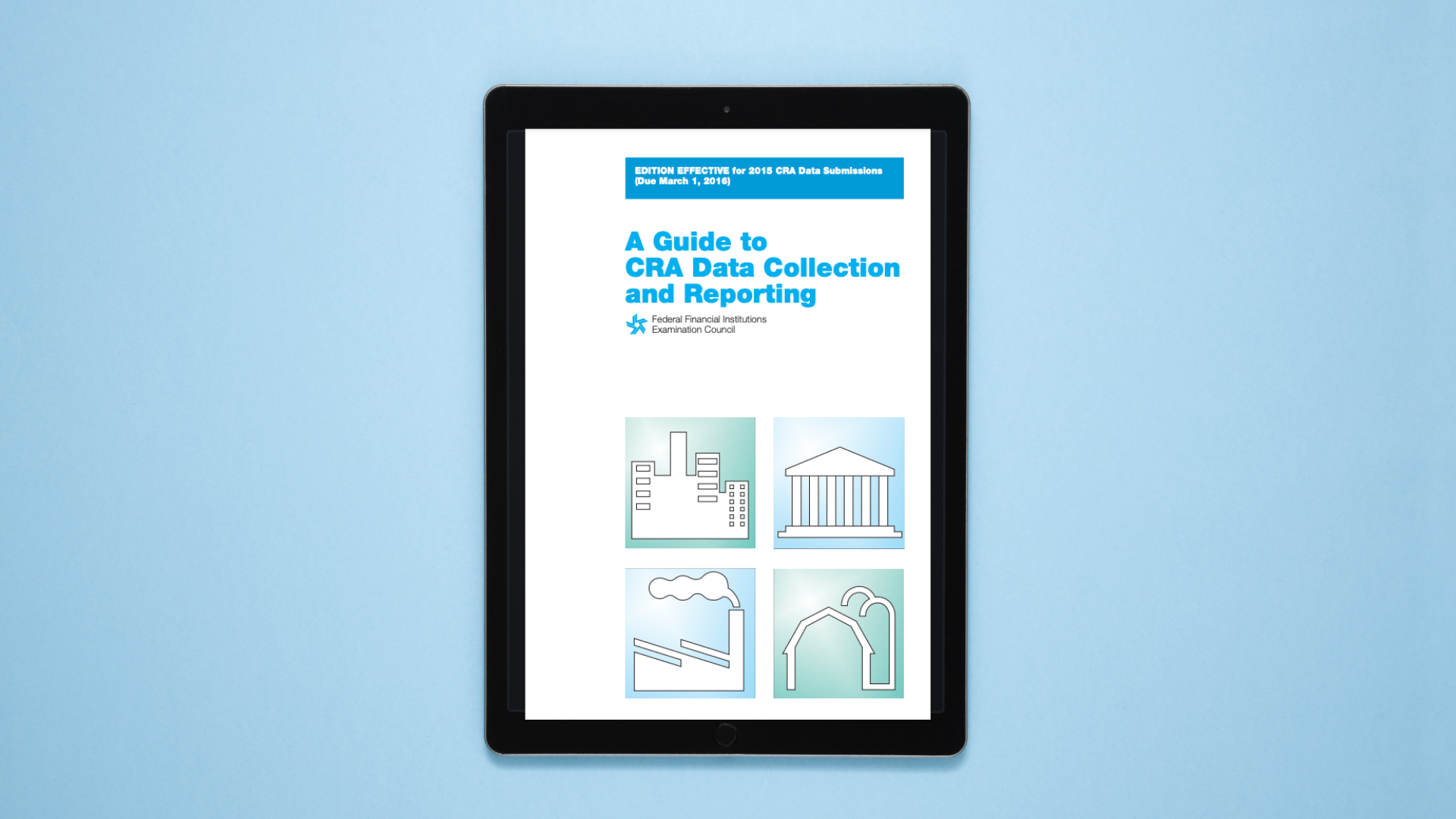
As a CRA officer, you know how important it is to get consideration under the CRA for as many loans, services, and investments as possible. This means that some banks like to include their consumer loans under their lending performance during a CRA exam. While this makes sense for some banks, it doesn’t make sense for others. To decide whether or not you should include your bank’s consumer loans during your CRA exam, ask yourself this question: Does consumer lending constitute a substantial majority of the bank’s business?
If the answer is yes, chances are you should be reporting your bank’s consumer loans. If the answer is no, then the choice is up to you, but in this situation, including your consumer loans may actually do more harm than good.
How to know if you should report consumer loans
According to the FFIEC in A Guide to CRA Data Collection and Reporting (ffiec.gov), your examiners will evaluate your consumer lending if “consumer lending constitutes a substantial majority of (your) business.” In other words, prepare to report your consumer lending if your consumer loans make up a large enough portion of your lending portfolio (by number and dollar volume of loans) that the lending test would not “meaningfully reflect (your) lending performance if consumer loans were excluded”(Federal Register). Your examiners will review your loans in one or more of the following categories: motor vehicle, credit card, home equity, other secured, and other unsecured.
If your bank is not required but is particularly proud of how well you’ve reached low- and moderate-income individuals or otherwise disadvantaged communities with your consumer lending in one or more categories, you can choose to have your consumer loans in those categories evaluated as part of your CRA exam. Be aware, though, that if you collect data for certain types of loans, you “must collect data for all loans originated or purchased within that category.” You would be subject to a data integrity exam similar to the data integrity reviews prior to full scope CRA examinations.

What data to include when reporting consumer loans
The guidance for collecting data on consumer loans is similar to the guidance for collecting data on small business and small farm loans. For each loan, you must collect and maintain:
- Unique identifier (number or alphanumeric symbol)
- Loan amount at origination or purchase
- Location of the loan
- Gross annual income of the borrower
Additionally, you must maintain separate data for each consumer loan category you are required, or choose, to report.
Deciding whether you should report consumer loans
If a majority of your bank’s business makes up consumer loans, or if you’re using your consumer loans to make a real difference in your community, you might want to consider including them for your next CRA exam. Let’s talk about some reasons you might choose to include your consumer loans:
- You participate in a successful asset building program, such as an Individual Development Account (IDA) program or similar, and you are supporting asset building through your consumer loan program. Examples are small auto loans to help participants secure reliable transportation to get to work and school or unsecured consumer loans for participants who are entering vocational programs.
- You offer home equity loans or lines of credit available in disadvantaged neighborhoods to help families with asset building needs other than home purchase, home improvement, or refinancing home purchase or home improvement loans.
- You’ve developed an introductory credit card for borrowers with low or minimal credit history.
Weigh the pros and cons of including your consumer lending performance for consideration under the CRA very carefully. Although including your consumer loan activity may support your CRA lending performance, it may also increase your CRA data integrity compliance risks given the high volume of consumer loan activities and the expectation that all collected loan data fields will need to be accurate.
The choice is up to you, so do your research and make the best decision for your bank.

Where to learn more
You can learn more about consumer lending as it relates to the CRA by checking out the FFIEC’s A Guide to CRA Data Collection and Reporting (ffiec.gov) and the Federal Register. Volume 81 of the Federal Register has really good guidance on what consumer loans are, how they count, and the data requirements around them in sections 12, 22, and 42.
Good luck!
Want to take a deeper dive into core CRA concepts? Consider joining your CRA colleagues in the CRA Hub.

- Driving Impact and Building Trust: The Power of Collaboration Between Compliance Professionals and Lenders in Community Development Lending - August 1, 2023
- Finish Strong, as published in ABA Bank Compliance - December 31, 2022
- What’s a Capital Stack and How Does it Work? - November 18, 2021